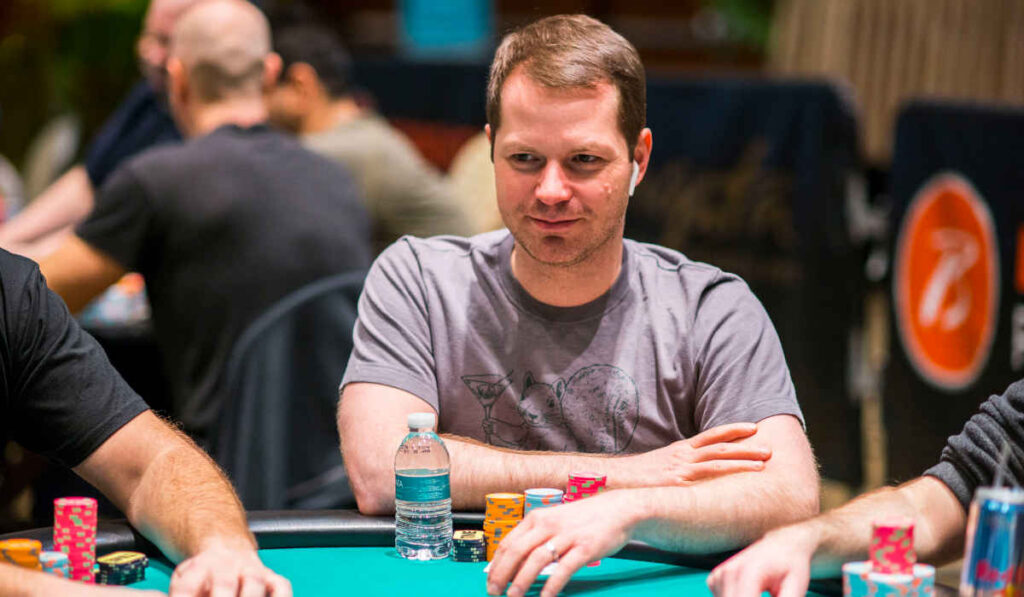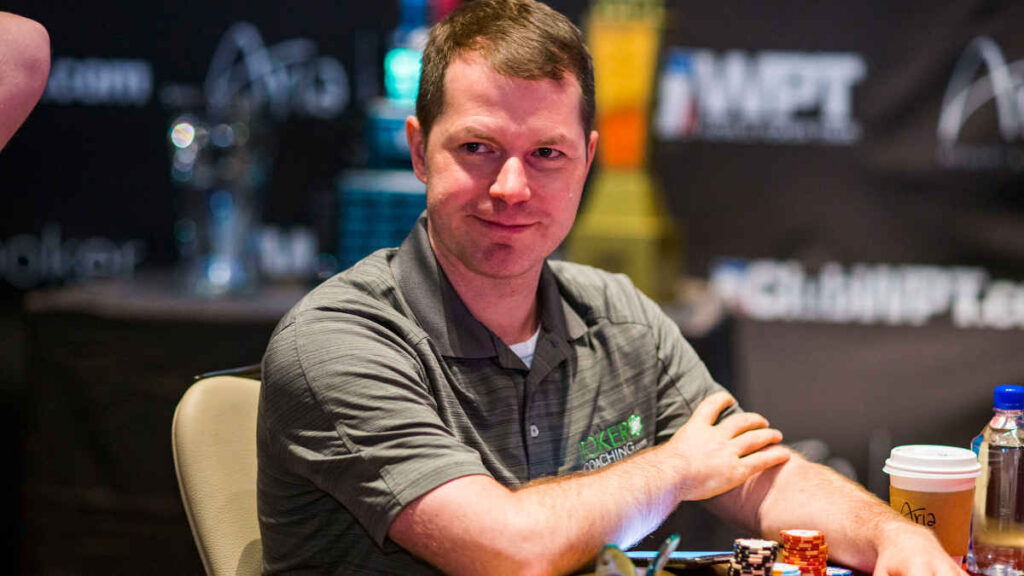Images courtesy of World Poker Tour
When it comes to winning at poker, there are a lot of myths and misconceptions floating out there. People say things like you just had to be born at the right time, find the right people, and/or get extremely lucky.
While all of these things have some truth to them, not one of them is really accurate. I have thousands of students out there who directly disprove them, consistently winning at No Limit Texas Hold’em using clear, concise, and fairly simple strategies.
If you want to become a winning player, this article is for you. However, it’s important that you really want to be a winner. Almost everyone who plays poker thinks this is their goal, but for many, there are other things that are more important.
They want to have a good time at the tables, socialize, pull big bluffs, have some drinks, and splash around. All of these things are fine if that’s what you play for, but if your goal is to be a winning player, then you need to follow a very clear and focused path.
It all essentially boils down to three things:
- Find the games you can beat
- Play a lot
- Have proper bankroll management
It sounds simple enough, but to actually follow through on all three, you’ll need a lot of discipline. You don’t need crazy luck or anything like that, but you do need to be ready to put in the work and outwork the others you’re competing against.
Defining Your Goals
Before we move on to these three key aspects, let’s briefly discuss the importance of defining your poker goals. To win at poker can mean different things for different people, and you need to figure out what it is that you’re after.
If you just want to win a little bit of money at the lowest stakes and have no desire to move up, you can actually achieve this without too much effort. If, on the other hand, your goal is to play in the highest stakes games, you’ll probably have to devote your life to poker.
You need to define your goals and set realistic expectations that align with your current situation. For most people, getting into a spot where they can win $20-$30 an hour playing the game is very achievable. This won’t make you rich, but it will at least allow you to enjoy the game.
From there, you can decide what comes next. Is this enough for you, or do you want more? And if you decide you want more, you will need to put in more hours, both playing and studying the game.
Find the Games You Can Beat
One of the biggest “secrets” to winning at poker is playing against bad players or becoming highly skilled yourself, so that you have an edge even against more experienced opponents.
A great thing about poker is that you often get to pick who you play against. This applies to cash games in particular, but even in tournaments, you can have a pretty good idea if a field will be soft or not based on the buy-in, how many players will be playing, etc.
During the bankroll-building stage of your career, your sole focus needs to be on making money. You aren’t there to have fun or pass the time.
While many out there want you to believe that poker is so tough, the truth is that most low stakes games are easily beatable, and so are the mid-stakes live games. I have quite a few students who are crushing it in $5/$10 games and $1,000 live tournaments, making around $100 an hour.
I’m not saying that just anyone can do this, but if you devote the time to studying and improving your skills, and also put in the hours at the tables, you’ll likely get there.
It’s true that some people can actually win at poker without much (if any) studying. You need to understand, though, that these are rare exceptions. I am not one of them, and you probably aren’t, either. All of that doesn’t matter, though, if you’re willing to sit down and do the work.
Putting in the Volume

Volume cures variance! You will experience huge upswings and downswings playing poker, especially in formats that naturally come with big variance. I’ve experienced two big 40-buy-ins downswings during my career.
It happens. If you play thousands of tournaments, you’ll go on really bad downswings and huge upswings. I’ve had upswings as well, winning or chopping live tournaments back to back. I won a 10,000 player tournament online and busted on the first hand more than once, too.
The bottom line is, short-term variance is irrelevant!
Variance is normal, and you shouldn’t get emotional about it. It just comes with the territory, and if you run computer simulations on large samples, you’ll reach the same conclusion.
Playing a lot, especially when you’re just starting, is also important so that you can figure out if you actually have an edge in the games you play. Many people believe they have an edge, but quite often, that’s not the case.
The more hands you play, the better you’ll be able to gauge the real situation. Thus, you need to play the games that allow you to put in a lot of volume.
Maintaining a Proper Bankroll
Proper bankroll management is tough. Not many people want to do it, because they’d rather get rich quick. Unfortunately, this approach rarely works.
I come from a frugal household, which taught me to be cautious with my money, and it spilled over into my bankroll management. I probably gave up a decent upside potential to ensure that I never go broke.
For many players, this is not a big deal. They wear it as a badge of honor that they went broke and were able to come back. The stories that you don’t hear as much, however, are about those who went broke and weren’t able to come back.
My mindset was always completely opposite. I’ve always kept a very large bankroll to make sure I would never ever go broke because that would be a disaster in my mind.
Maintaining a larger bankroll gives you more options in terms of what you can do with your money, and if you do go on a particularly bad downswing, which does happen, especially in tournaments, it won’t clean you out.
Another thing to keep in mind is that, as your edge decreases (as you start playing in tougher games), you’ll need to keep more buy-ins. Variance in tournaments can be particularly brutal, as you only cash in 15%-20% of them, and most cashes are for small amounts.
I’d say, if you’re playing in $1,000+ tournaments, you need to have at least 300 buy-ins handy, provided that you actually have an edge in these games. For cash games, you don’t need nearly as much, as you can find some very soft games at lower stakes, and downswings, even when bad, won’t be nearly as bad.
And that’s all there is to it. This is how you win at poker. Do these three things consistently, stay disciplined, and you will become a winning player.


